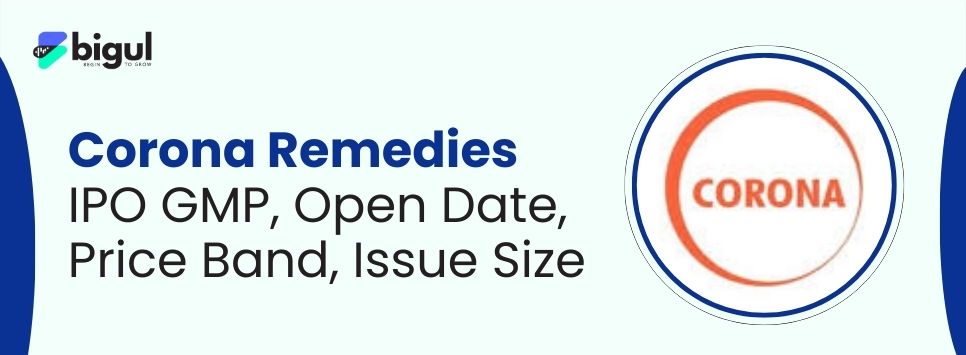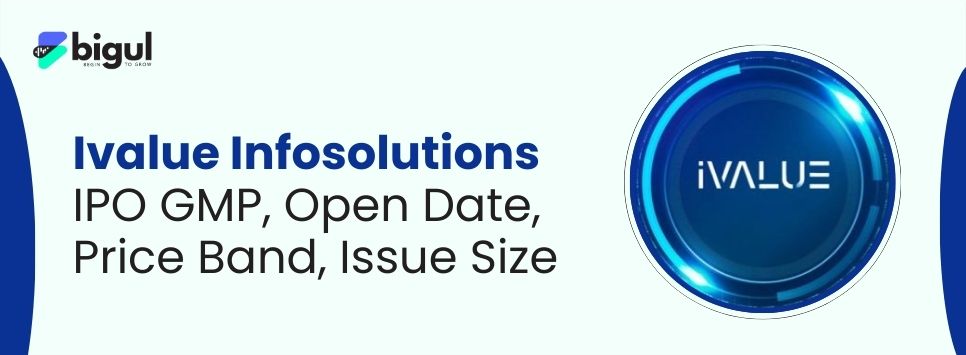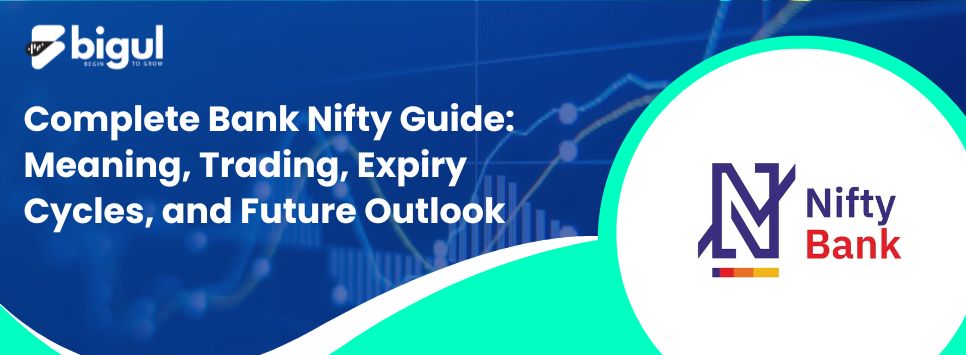Bank Nifty is a popular stock market index in India that tracks the performance of major banking stocks. Many new investors ask what bank nifty is and wonder about its meaning. Simply put, bank nifty meaning refers to the overall trend of the banking sector, captured by the Nifty Bank index on the National Stock Exchange (NSE). The index value is derived from the share prices of big banks. If a bank’s stock price rises, the bank's nifty share price (the index level) moves up, and if a stock price falls, the index goes down.
This guide will explain how to trade in Bank Nifty and answer key questions like when is Bank Nifty expiry and why Bank Nifty is down today. We’ll cover basics like bank nifty calculation, bank nifty weightage, and the nifty bank stocks list.
You’ll also learn about bank nifty expiry day cycles (weekly and monthly) and useful tools like the bank nifty option chain, bank nifty chart, and bank nifty live market updates. Along the way, we’ll explore analysis tools such as bank nifty support and resistance, bank nifty candlestick chart, and bank nifty pcr ratio.
Also Read | Everything you need to know about markets and its benchmark Nifty
What is Bank Nifty? Its Meaning, Composition, and Key Bank Stocks Explained
The Bank Nifty index (officially called the Nifty Bank index) is a sectoral stock market index that tracks the performance of major Indian banks. In other words, bank nifty meaning is that it reflects the health and trend of the Indian banking sector. The index is made from a nifty bank stocks list of top banks chosen by market capitalization. Each bank in the list contributes to the index according to its bank nifty weightage, which is based on free-float market capitalization. No single bank dominates: individual weights are capped (around 35% each), ensuring no one bank can push the index too far by itself.
Here are some key banks in the nifty bank stocks list:
-
HDFC Bank (Private bank) – one of the largest components by weight.
-
ICICI Bank (Private bank) – another heavyweight in the index.
-
State Bank of India (SBI) – the largest public sector bank with a strong weight.
-
Axis Bank – a major private sector lender.
-
Kotak Mahindra Bank – a well-known private bank.
-
IndusInd Bank – a leading private sector bank.
-
Others – Smaller banks like Bandhan Bank or IDFC First Bank (depending on the latest list).
Each bank’s share price affects the overall bank nifty share price (the index value). When these stocks rise or fall, Bank Nifty moves up or down accordingly. You can check this with a Bank Nifty chart or by using the nifty bank compare feature on financial websites to see how Bank Nifty stacks up against other indexes.
Also Read | Nifty Financial Services (FINNIFTY): An Overview
How is Bank Nifty Calculated? Understanding Weightage and Index Method
Bank Nifty is calculated using a free-float market capitalization method. This means each bank’s impact on the index depends on its share of the total free-float market value. In practice, bank nifty weightage is based on each bank’s market cap (stock price times freely traded shares). The index value equals the sum of all component banks’ free-float market caps divided by a fixed divisor (chosen so the index started at a base value, e.g. 1000, on its launch date).
Some key points about this calculation:
-
The index started with a base value (for example, 1000 points) on a base date (around 2000).
-
It includes a set number of banks (up to 12) that meet specific criteria (liquidity, listing, etc.).
-
The value is updated in real time during market hours as stock prices change.
-
The bank nifty weightage of each stock is adjusted when companies issue new shares or during periodic reviews (semi-annually).
-
Think of each bank’s nifty bank share price as contributing to the index according to its weight.
This calculation method ensures bank nifty fairly reflects changes in the banking sector. If a top bank’s stock price jumps, its market cap rises and this pulls the index up. Conversely, if a bank underperforms, it can drag the index down. Traders often watch how bank nifty weightage shifts during reviews to see which banks will have more or less influence on the index.
Also Read | Bank Nifty Volatility Index
Bank Nifty Share Price vs Nifty Bank Index: Key Differences Explained Simply
One common confusion is between a stock’s price and the index value. Bank Nifty share price often refers to the current value of the Bank Nifty index. However, remember that bank nifty is an index, not a tradable stock, so it doesn’t have a 'share price' like a company does. Instead, it has an index level (in points) that moves as the share prices of its component banks change.
If you want to check individual bank stocks, look at their Nifty bank share price. For example, the Nifty Bank share price of HDFC Bank might be Rs 1950, and of SBI Rs 650. These are the actual stock prices of each bank. The Bank Nifty index aggregates these (with weights) to give a combined index value.
In summary:
-
Bank Nifty Index: Value in points (e.g., 40,000), calculated from the banks’ prices. It’s what you see when asking for Bank Nifty share price in market quotes.
-
Bank shares: Each bank in the index has its own share price (the Nifty bank share price). These individual prices are what traders buy on the stock market.
-
Nifty Bank Index vs Shares: The index is often called the Nifty Bank index, but it isn’t a share you can own. Instead, think of it as a weighted score of all the banking stocks’ share prices.
Understanding this difference helps avoid confusion. When people say "bank nifty share price", they usually mean the Bank Nifty index level. When they ask for a particular nifty bank share price, they mean the price of one of the bank stocks in the index.
Also Read | Insights into the Nifty Metal Index and the Metal Industry
Understanding Bank Nifty Expiry: Weekly and Monthly Cycles, Expiry Day Explained
Bank Nifty has both weekly and monthly expiry cycles for its futures and options contracts. A common question is when is bank nifty expiry. Typically, the bank nifty expiry day for weekly contracts is every Thursday of the trading week. In other words, weekly expiry occurs each Thursday. The monthly expiry for Bank Nifty is usually the last Thursday of each month. If that day is a market holiday, the expiry shifts to the previous trading day (usually Wednesday).
For example, if the last Thursday is a holiday, traders can expect the monthly expiry on the Wednesday just before. On expiry day, open positions in Bank Nifty futures and options are settled based on the final index level. Expiry days often see higher trading activity and volatility as contracts are closed or rolled over.
Key points about Bank Nifty expiries:
-
Weekly Expiry: Every Thursday. Weekly options provide short-term trading opportunities.
-
Monthly Expiry: Last Thursday of the month (or the preceding trading day if needed).
-
Expiry Day: The actual day contracts expire. For Bank Nifty, this is often referred to as bank nifty expiry day, which is typically Thursday.
-
Impact: Traders pay attention to expiry cycles, because prices can swing more as market makers and traders adjust positions.
If you're wondering when is bank nifty expiry in a given month, check the NSE's official calendar or financial news. In short, every Thursday is a weekly expiry, and the last Thursday of the month is the monthly expiry (unless a holiday shifts it).
Trading Bank Nifty: Tools, Strategies, Analysis and Tips for Beginners
Many new traders ask how to trade in bank nifty successfully. To get started, you need a brokerage account with NSE trading access for futures and options. You can trade Bank Nifty using bank nifty futures or options. A Bank Nifty future contract represents 25 times the index, so a 1-point move equals Rs25 change per lot. Options (calls and puts) allow more strategies with limited risk.
Here are some beginner tips:
-
Open the Right Account: Ensure your broker account supports Bank Nifty F&O (futures & options). Begin with smaller lot sizes and increase as you learn.
-
Analyze the Chart: Study a bank nifty chart to spot trends. Check for bank nifty support and resistance levels, which are price areas where the index often bounces or falls.
-
Use Option Chains: Look at the bank nifty option chain to see popular strike prices and market sentiment (for example, the bank nifty pcr ratio or high bank nifty oi data at certain strikes).
-
Monitor Live Data: Keep a bank nifty live feed or ticker running.
-
Manage Your Risk: Always use stop-loss orders. Bank Nifty can swing significantly, so never risk more than you can afford.
By following these steps, beginners can build confidence. Trading also involves staying aware of global cues (like RBI announcements or global market trends) which can affect Bank Nifty. Remember, practice is key: consider using a simulator or paper trading before risking real capital.
Key Tools for Bank Nifty: Charts, Option Chains, Live Data, and Analysis
Traders use various tools to analyze Bank Nifty. A bank nifty chart is one of the main tools. This is usually a bank nifty candlestick chart, where each bar shows the index’s open, high, low, and close. Candlestick patterns (like hammers or engulfing candles) can give clues about trend changes. Real-time charts are available on platforms like TradingView or broker apps, often labeled as bank nifty live chart tradingview or similar.
The bank nifty option chain is another key tool. It lists all call and put option strikes for Bank Nifty, along with volumes and open interest. By studying the option chain, traders gauge market sentiment. For example, the bank nifty pcr ratio (the ratio of total puts to calls open) can indicate bearishness if it’s high. The bank nifty oi data (open interest) shows where big traders have placed bets. Spikes in OI at certain strikes can signal support or resistance levels.
For live market updates, keep an eye on a bank nifty live ticker. Financial websites and apps show Bank Nifty in real time. TradingView’s bank nifty live chart tradingview widget is also a popular way to see the live index movement and apply technical indicators.
Some market websites also offer a nifty bank compare feature, which lets you compare Bank Nifty’s performance side by side with other indices like Nifty 50 or sectoral indices.
Technical Indicators for Bank Nifty: Support, Resistance, Candlesticks, and PCR
Technical analysis helps traders predict Bank Nifty moves. A basic approach is to mark bank nifty support and resistance levels on a bank nifty chart. Support levels are price zones (like 38,000) where the index tends to stop falling and bounce back, while resistance levels (like 39,500) are where it often meets selling pressure. These levels, drawn on a bank nifty candlestick chart, help set targets and stop-losses.
Candlestick patterns are another tool. For example, patterns like doji or hammer on the Bank Nifty daily chart can signal trend reversals. A bullish engulfing pattern after a downtrend might indicate a rise. Traders often watch for these on the bank nifty candlestick chart to time entries and exits.
The bank nifty pcr ratio (Put-Call Ratio) is a popular sentiment indicator from the option market. It’s calculated by dividing total put open interest by total call open interest. A high bank nifty pcr (above 1) means more puts than calls, which some traders interpret as bearish sentiment (or even a contrarian bullish signal). Conversely, a low PCR (below 0.7) means more calls (bullish). By combining PCR with price levels, traders gauge if Bank Nifty is likely to reverse or continue. Remember that no single indicator is foolproof – use multiple signals together.
Market Sentiment: Bank Nifty Heatmap, OI Data, PCR Ratio, and Market Forecasts
To gauge market sentiment, traders use tools like heatmaps and option statistics. A bank nifty heatmap is a visual chart where each banking stock’s daily change is color-coded (green for gain, red for loss). The heatmap helps spot which banks are driving moves. For example, if one stock is deep red while others are green, it tells you that overall Bank Nifty might not fall as much, and vice versa.
We also watch option market data. Bank Nifty OI data (open interest) and the bank nifty pcr ratio come from the option chain. Rising open interest along with price movements can confirm a trend. For instance, if Bank Nifty rises and open interest is increasing, it suggests bullish bets are building. The bank nifty pcr ratio indicates if traders are more bearish (more puts) or bullish (more calls).
Many sources offer bank nifty predictions, but treat them cautiously. Phrases like today bank nifty prediction or bank nifty prediction for tomorrow appear on financial sites and forums. Often, these are just analysts’ guesses. It’s better to base decisions on real data (charts, news, OI) than on one-day forecasts.
For daily tracking, sites like Bigul publish Bank Nifty outlooks and TradingView users share technical calls (via bank nifty live chart tradingview). These can provide ideas, but remember no prediction is guaranteed. Use them as one of many inputs when forming your market view.
Conclusion
In conclusion, Bank Nifty reflects the banking sector and moves with market forces, so keep practicing your analysis. Use the charts and tools discussed to study Bank Nifty regularly. For example, try out a nifty bank compare feature on financial sites to see how Bank Nifty moves relative to the broader market. Watching a bank nifty live chart on tradingview while following news can train you to spot patterns over time. People often ask why Bank Nifty is down today; understanding the underlying factors behind each move is the key. Keep learning, stay curious, and happy trading!
FAQs: Common Bank Nifty Questions Answered with Easy Explanations and Tips
1. What is Bank Nifty?
Bank Nifty (also called Nifty Bank) is a stock market index of the banking sector on the NSE. It shows the combined performance of top banking stocks. In other words, bank nifty meaning is the overall health and trend of India’s banks. The index is calculated from each bank’s share price and weight in the index. It’s used as a benchmark to gauge how well banks are doing.
2. When is Bank Nifty expiry?
Bank Nifty futures and options have weekly and monthly expiry cycles. The bank nifty expiry day for weekly contracts is every Thursday. The monthly expiry is usually the last Thursday of each month (if a Thursday is a market holiday, it moves to the previous trading day). Traders watch these expiry cycles closely since prices can swing more on expiry days.
3. How to trade in Bank Nifty?
To trade Bank Nifty, open a brokerage account that offers NSE futures and options. You can buy/sell Bank Nifty futures or trade Bank Nifty options contracts. Beginners should use analysis before trading. For example, analyze a bank nifty chart to identify trend direction and levels, and check a bank nifty option chain to choose strike prices. Set stop-loss orders to manage risk. Tracking news on the NSE bank nifty page or watching a bank nifty live chart can help inform your trades.
4. Why Bank Nifty Down today?
Bank Nifty falls when the major banks’ stocks fall. Many reasons can cause this: negative news about banks, a rate hike by RBI, or global markets dropping can hurt bank stocks. The bank nifty heatmap will show which banks are falling (red squares). You can also check bank nifty oi data and the bank nifty pcr ratio: a high PCR (more puts) often means bearish sentiment. Large open interest at certain strike prices can pull the index down. All these factors explain why bank nifty is down today.
5. What Is Today's Bank Nifty Prediction?
Many websites give a prediction for today’s Bank Nifty, but these are just forecasts. Markets can be unpredictable. Instead of relying solely on a prediction, use real-time data: watch trends on the bank nifty chart, check news and indicators. Treat any today bank nifty prediction as only one input in your analysis.
6. What is Bank Nifty prediction for tomorrow?
Predictions for tomorrow are also uncertain. You might see some analysts suggest where Bank Nifty could move, but take that with caution. You may even see a bank nifty prediction for tomorrow mentioned in news or forums, but always do your own analysis. Use resources like the bank nifty live chart tradingview for updates, but remember no one can say Bank Nifty’s exact path tomorrow.








.jpg)
.jpg)
